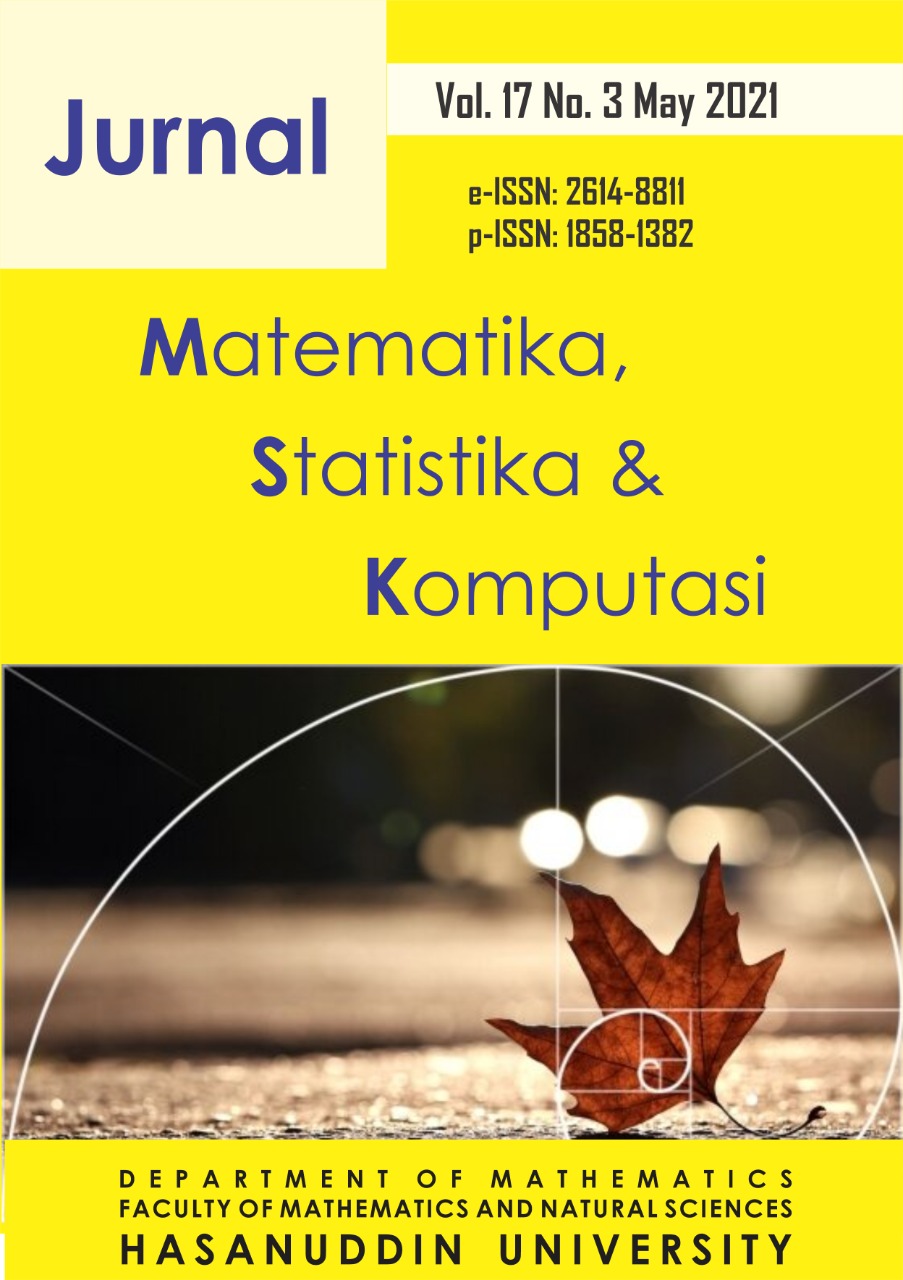Comparison of DBSCAN and K-Means Clustering for Grouping the Village Status in Central Java 2020
DOI:
https://doi.org/10.20956/j.v17i3.11704Keywords:
Keywords: Village Status, DBSCAN clustering, K-Means clustering, Covid-19Abstract
Abstract
Since Covid-19 was declared as a pandemic disaster, the world economic order has begun to be shaken, and Indonesia is no exception. Indonesia's economic growth has continued to contract since quarter II. Central Java Province is in the third place with the highest number of positive cases in Indonesia. The government try to improve the quality control over the implementation of village funds by observing the classification of village status. The status has been made by the Ministry of Villages based on IDM value. The purpose of this study is to create a village status cluster based on the three index values that compose the IDM, namely IKS, IKL, and IKE. This goal is realized through a comparative analysis of two clustering methods, that is K-means and DBSCAN. The results showed that by using the DBSCAN 4 clusters were formed, while using the K-means 3 clusters were formed. The silhouette value for each cluster formed using the DBSCAN is higher than the silhouette of clusters formed by the K-means and it is concluded that the DBSCAN is more appropriate to use in clustering village status in Central Java province in 2020 than K-means.
References
Apsari, W. 2019. Mendes PDTT Optimis Target RPJMN 2020-2024 Dapat Direalisasikan. Monitor, Jakarta. https://monitor.co.id/2019/11/27/mendes-pdtt-optimis-target-rpjmn-2020-2024-dapat-direalisasikan. [11 Oktober 2020]
BPS. 2020. Berita Resmi Statistik: Pertumbuhan Ekonomi Indonesia Triwulan II-2020. Publikasi BPS, Jakarta. https://www.bps.go.id/pressrelease/2020/08/05/1737/-ekonomi-indonesia-triwulan-ii-2020-turun-5-32-persen.html. [13 September 2020]
Budiman S.A.D., Safitri D. & Ispriyanti D., 2016. Perbandingan Metode K-Means dan Metode DBSCAN pada Pengelompokan Rumah Kost Mahasiswa di Kelurahan Tembalang Semarang. Jurnal Gaussian, Vol. 5, No. 4, 757-762.
Kristianto A., Sediyono E. & Hartomo Kristoko D., 2020. Implementation DBSCAN algorithm to clustering satellite surface temperature data in Indonesia. Register: Jurnal Ilmiah Teknologi Sistem Informasi, Vol. 6, No. 2, 109-118.
Nooraeni Rani, 2016. Metode Cluster Menggunakan Kombinasi Algoritma Cluster K-Prototype Dan Algoritma Genetika Untuk Data Bertipe Campuran. Jurnal Aplikasi Statistika & Komputasi Statistik, Vol. 7, No. 2, 81-98.
Novi S., 2020. Clustering Status Desa Menggunakan Metode DBSCAN (Density-Based Spatial Clustering of Application With Noise). Thesis (Skripsi). Fakultas Sains dan Teknologi, Universitas Islam Negeri Sultan Syarif Kasim Riau, Riau.
Pramana S., Yuniarto B., Mariyah S., Santoso I. & Nooraeni R., 2018. Data Mining dengan R : Konsep Serta Implementasi. In Media., Bogor.
Pusat Data Desa Indonesia. 2020. Indeks Desa Membangun. Kementerian Desa Pembangunan Daerah Tertinggal dan Transmigrasi, Jakarta. https://pddi.kemendesa.go.id/idm. [13 September 2020]
Satuan Tugas Covid-19. 2020. Peta Sebaran Covid-19. https://covid19.go.id/peta-sebaran. [22 September 2020]
Talakua M.W., Leleury Z.A. & Taluta A.W., 2017. Analisis Cluster Dengan Menggunakan Metode K-Means Untuk Pengelompokan Kabupaten/Kota Di Provinsi Maluku Berdasarkan Indikator Indeks Pembangunan Manusia Tahun 2014. Register: A. BAREKENG: Jurnal Ilmu Matematika dan Terapan, Vol. 11, No. 2, 119-128.
Yuan C. & Yang H., 2019. Research on K-value selection method of K-means clustering algorithm. J—Multidisciplinary Scientific Journal, Vol. 2, No. 2, 226-235.
Downloads
Published
How to Cite
Issue
Section
License
Copyright (c) 2021 Author and publisher

This work is licensed under a Creative Commons Attribution 4.0 International License.

This work is licensed under a Creative Commons Attribution 4.0 International License.
Jurnal Matematika, Statistika dan Komputasi is an Open Access journal, all articles are distributed under the terms of the Creative Commons Attribution License, allowing third parties to copy and redistribute the material in any medium or format, transform, and build upon the material, provided the original work is properly cited and states its license. This license allows authors and readers to use all articles, data sets, graphics and appendices in data mining applications, search engines, web sites, blogs and other platforms by providing appropriate reference.







